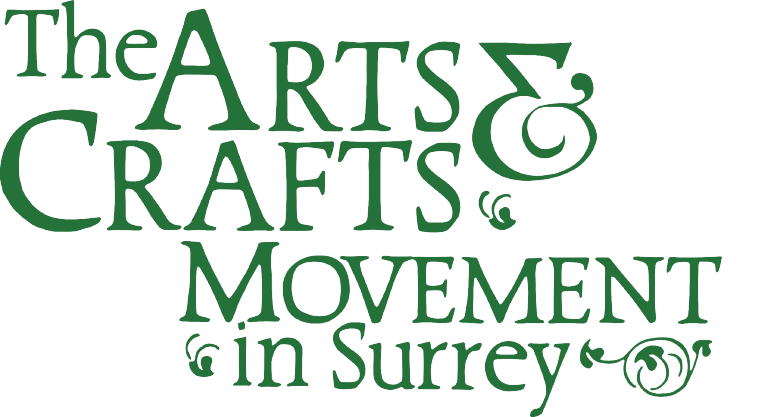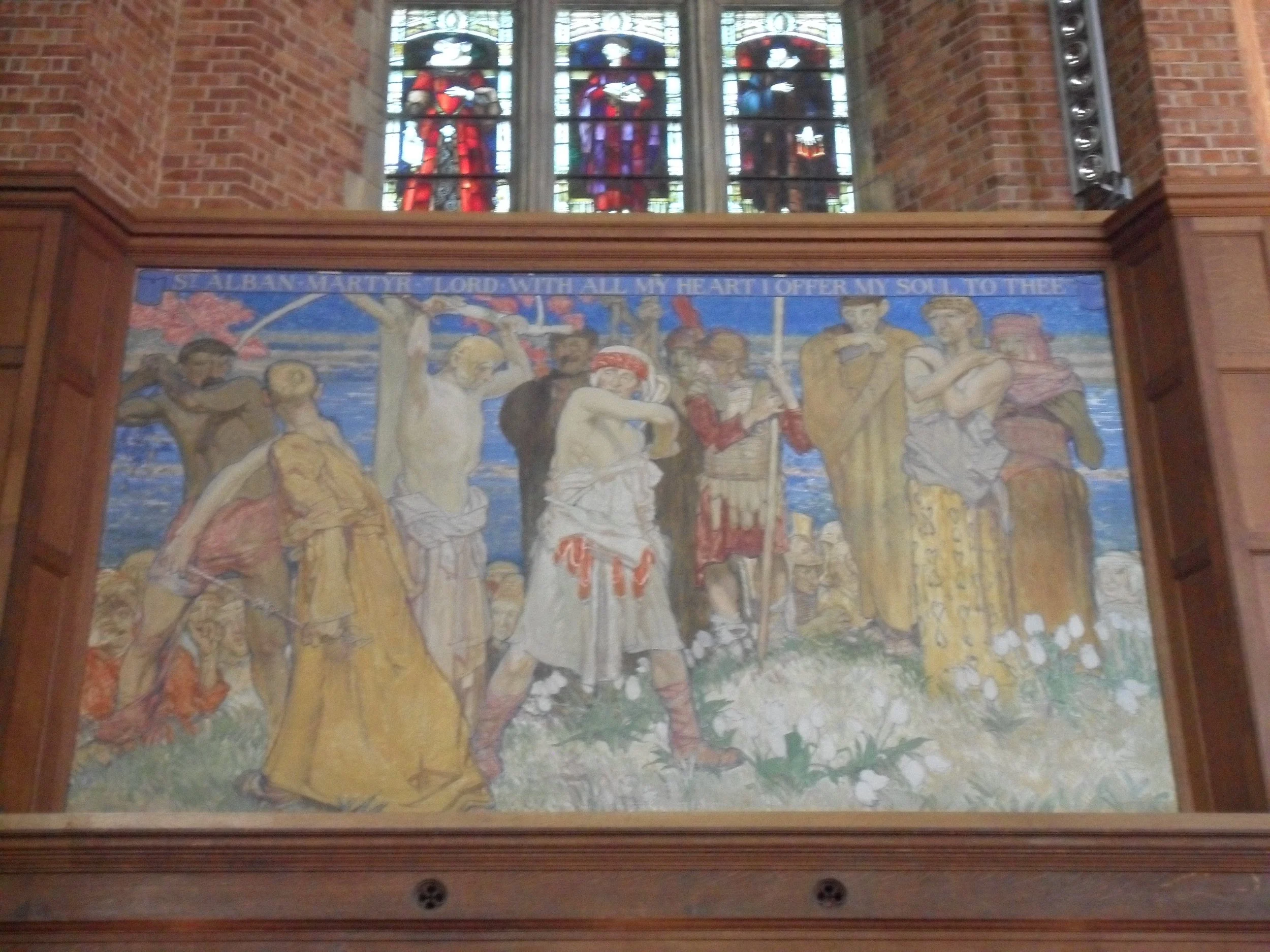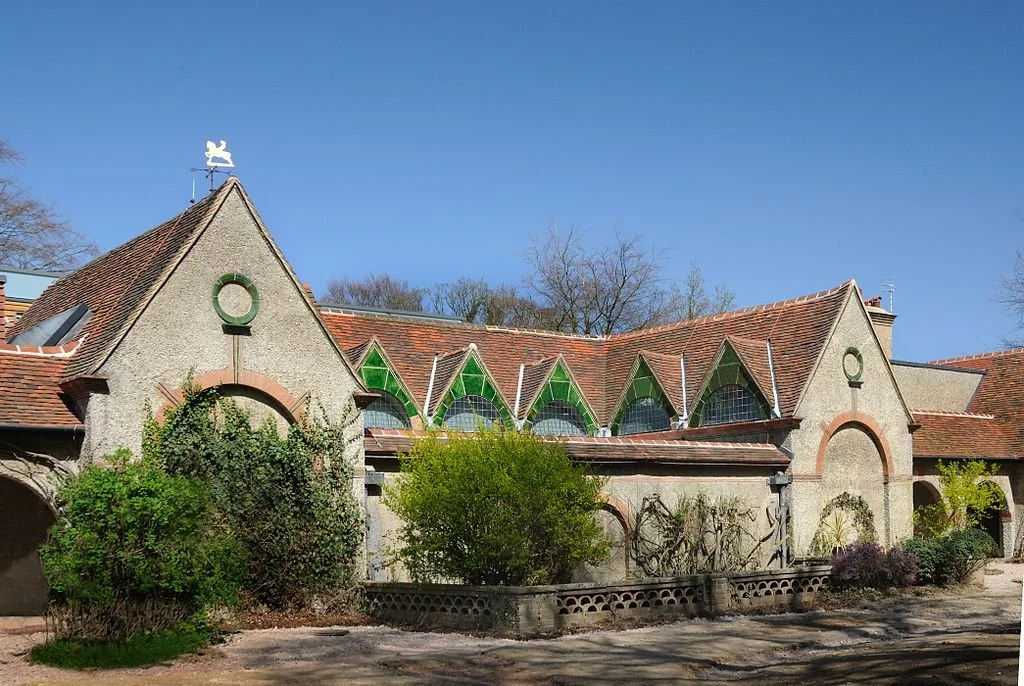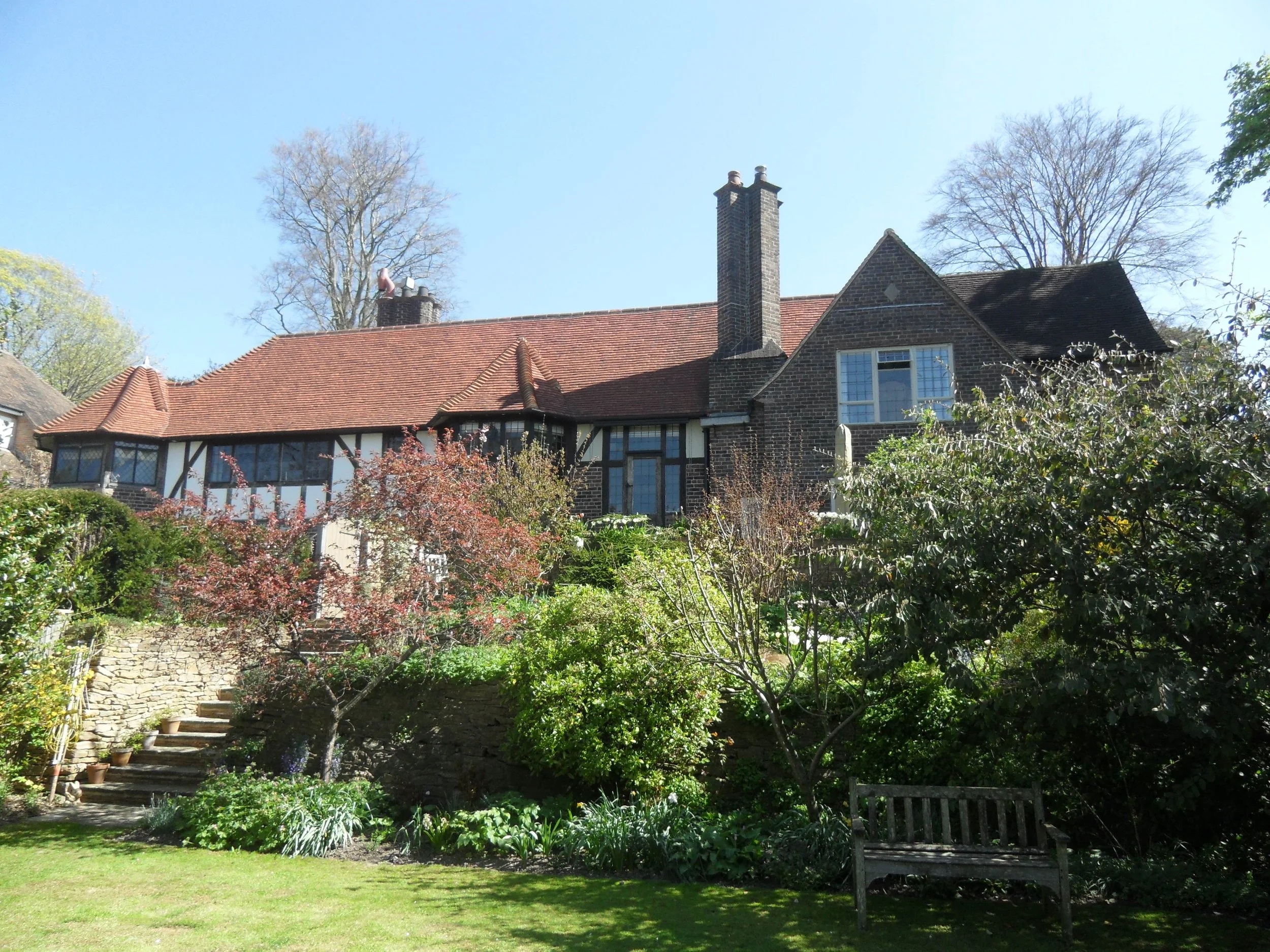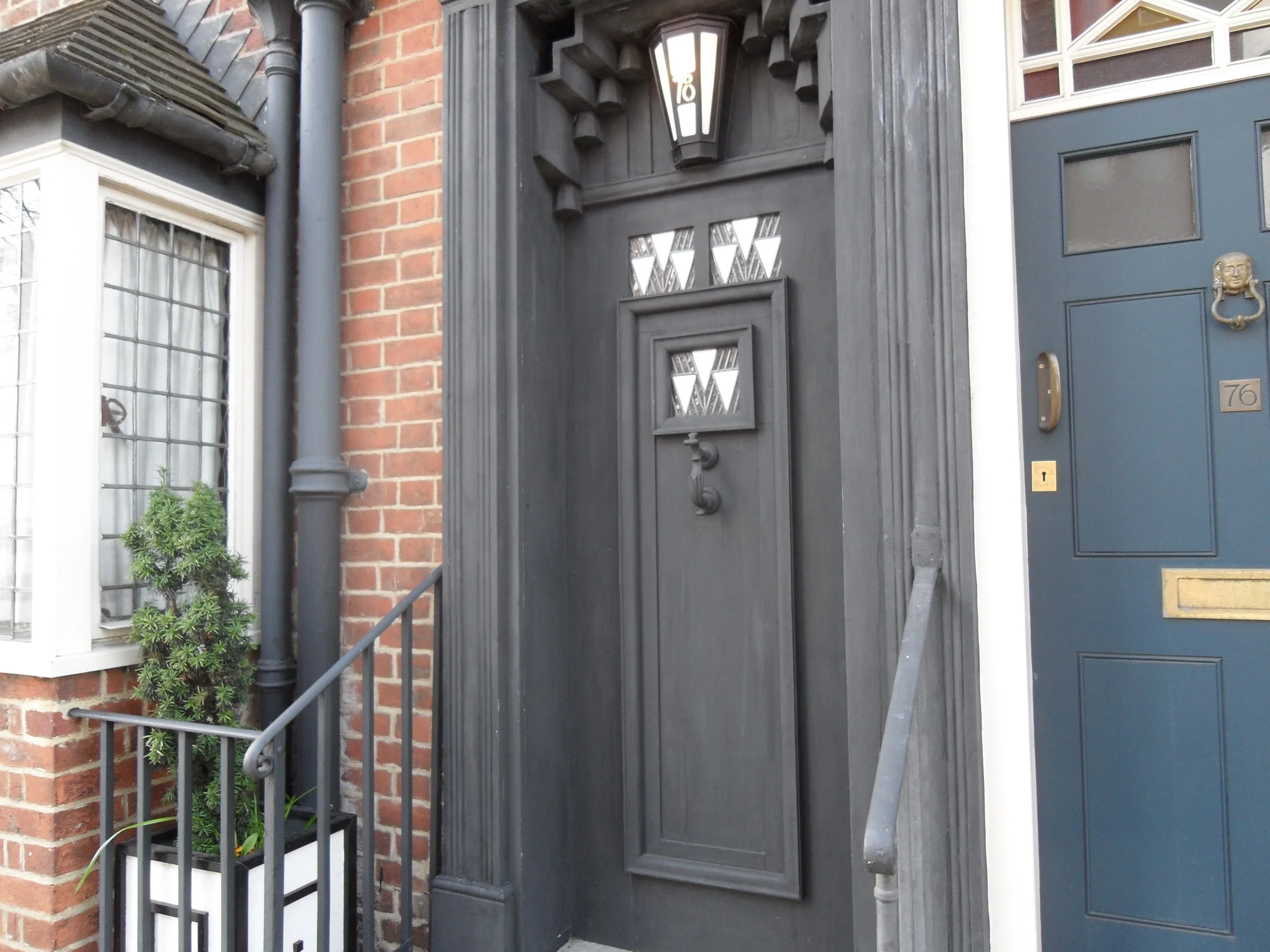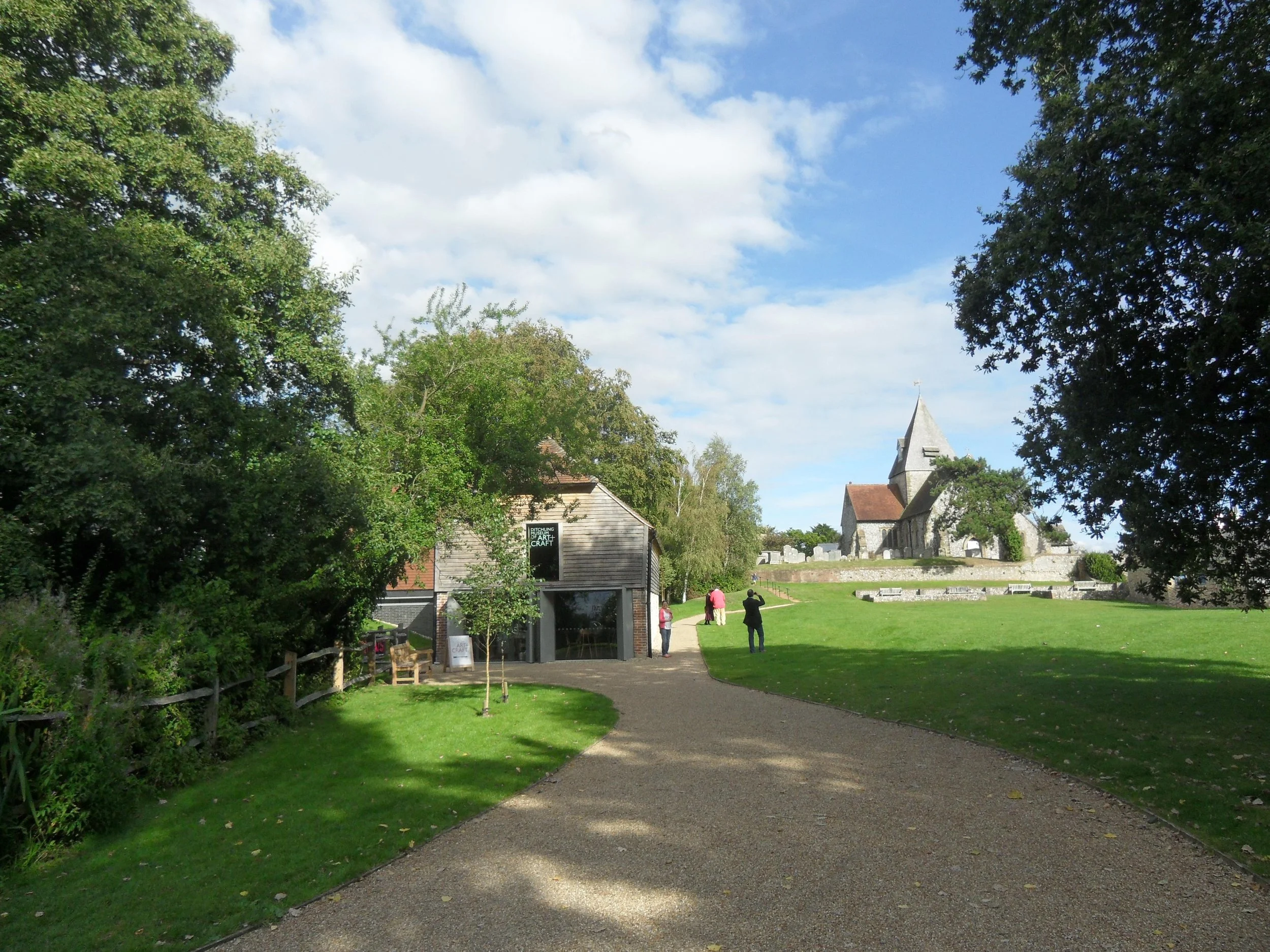ACMS EVENTS - 2006
The following lectures were presented during 2006:
Barley Roscoe – Fifty years of fine furniture and design
Dr Libby Horner – Brangwyn and the decorative arts
Richard Jefferies – George Frederick Watts: Painter and Philanthropist
David Elliot – Marie Spartali Stillman – Artist and Pre-Raphaelite Icon
Hilary Underwood – Painting the cosmos: landscapes by G.F. Watts
David Rainger – Emery Walker: The universal Samaritan
The following visits were made during 2006
Bedales School and the Barnsley workshop – Wednesday 1 March 2006
The garden at Vann, Hambledon – Saturday 29 April 2006
A weekend in the South Cotswolds – Friday 30 June to Sunday 2 July 2006
Visit to Undershaw, Guildford by MH Baillie Scott – Saturday 16 September 2006
Visit to Derngate by CR Mackintosh and Welwyn Garden City – Saturday 30 September 2006
A day with Frank Brangwyn at Burgess Hill and Ditchling, East Sussex – Wednesday 18 October 2006
The following events were held in 2006
Annual General Meeting and illustrated presentation – Wednesday 24 May 2006
Webb & Turnor study day at Goddards, Abinger Common – Tuesday 6 June 2006
LECTURES
Fifty years of fine furniture and design Barley Roscoe
Wednesday 25 January 2006
An illustrated lecture in which Barley Roscoe will discuss the work of Gimson and the Barnsleys over two generations from the heart of the Arts and Crafts Movement to the outbreak of the Second World War. This lecture will provide an introduction to the Society’s visit to Bedales School and the Barnsley workshop on 1 March. Barley Roscoe is a consultant curator, writer and lecturer, and a member of the BBC Antiques Roadshow team of experts. Her background is firmly rooted in the Arts & Crafts tradition, as her mother was the great niece of Ernest Gimson the renowned architect, furniture designer and maker. Barley Roscoe established the Crafts Study Centre within the Holburne Museum of Art, Bath where she was Director from 1986-1999, and was awarded an MBE for her work there. The collection, which moved to Farnham in 2004, concentrates on work by some of the best British craftspeople from 1900 onwards and includes fine examples of furniture by Gimson and the Barnsleys.
Brangwyn and the decorative arts Dr Libby Horner
Tuesday 21 February 2006
Brangwyn mural at Christ’s Hospital, Horsham
Frank Brangwyn (1867-1956) was arguably the first British artist to gain an international reputation and certainly the first living artist to be honoured with a retrospective at the Royal Academy. Discovered by A H Mackmurdo, he worked briefly for William Morris, and received commissions from Siegfried Bing and Tiffany which gave him the confidence to branch into decorative arts, a significant undercurrent in his work for the remainder of his life. Dr Libby Horner will discuss the varied disciplines which he mastered from mosaics, stained glass, furniture, carpets, ceramics, glassware and jewellery to architecture and interiors. Dr Horner is guest curator for the 2006 exhibition, Frank Brangwyn, to be held in Leeds, Bruges and Swansea, and is co-editor of the associated publication. She is writing the handbook for the Brangwyn selling exhibition at The Fine Art Society in March and April this year; is consultant for the forthcoming Brangwyn film; started the Brangwyn website and is compiling the catalogue raisonné of all Brangwyn’s work, both fine and decorative art.
Watts Gallery
George Frederick Watts: Painter and Philanthropist Richard Jefferies
Tuesday 21 March 2006
Richard Jefferies, Curator of the Watts Gallery, will lecture with illustrations on the life and work of the famous Victorian painter and sculptor George Frederick Watts OM RA (1817- 1904), describing this extraordinary man from his humble beginnings to his recognition as the grand old man of painting. The Society’s lecture series has been running for over ten years during which the paintings on the walls of the Watts Gallery have provided a backdrop to some fascinating subjects. Richard has always made our members welcome and encouraged the Society to flourish and now, at the time of his retirement after 37 years as Curator, he will share some thoughts of Watts with us. After the lecture there will be a ‘celebration and farewell’ for Richard.
Marie Spartali Stillman – Artist and Pre-Raphaelite Icon. David Elliot
Tuesday 26 September 2006
An illustrated lecture in which David Elliot explores the life and artistic achievement of Marie Spartali Stillman. As occasional model for Dante Gabriel Rossetti and Edward Burne-Jones, Marie Spartali Stillman (1844-1927) remains a well-known face of the Pre-Raphaelite era. Born into a well-to-do Anglo-Greek family in London, her circle of close friends included Lucy Madox-Brown, G.F. Watts, Jane Morris, the lonides family, and James Abbott MacNeill Whistler. A gifted artist in her own right, she was tutored by Ford Madox Brown and became a successful painter whose work was exhibited regularly in England and the United States.
David Elliot is author of the biography A Pre-Raphaelite Marriage: The Lives and Works of Marie Spartali Stillman and William James Stillman and of the published biography of Charles Fairfax Murray: The Unknown Pre-Raphaelite. David has family links with descendants of the Pre-Raphaelite circle. Now retired, he writes and lectures in Pre-Raphaelite studies and is co-curator of a projected exhibition of Fairfax Murray drawings from the Princeton University collection.
Painting the cosmos: landscapes by G.F. Watts – a guided viewing of the Exhibition. Hilary Underwood
Monday 23 October 2006
Currently at Watts Gallery, this touring exhibition of paintings by George Frederick Watts is the first to be devoted to his landscapes and includes finished pictures which the artist intended for exhibition and sale, as well as more private sketches and studies. In addition to loans from the Tate Gallery and the Ashmolean Museum are paintings selected from several private collections. Of note are a group of virtually unknown but sensitive landscape studies in watercolour, which have never been shown before. The exhibition has been curated by Prof. Allen Stanley and Hilary Underwood; Hilary will be our speaker for the evening with an introductory talk and guided viewing, in two groups, to focus on selected paintings. Hilary is an ACMS Council member and Curatorial Advisor at Watts Gallery.
Emery Walker – The universal Samaritan David Rainger
Monday 4 December 2006
7 Hammersmith Terrace, Emery Walker’s home
Society member David Rainger will trace the life and work of Emery Walker, typographer, printer, socialist, bibliophile, photographer and friend of William Morris. Emery Walker was described variously by his contemporaries as: – “The brown velveteen artist”, “The universal Samaritan”, “He knows his subject thoroughly well” and “As much the pure artist as is made”. The talk will be illustrated with slides of his life and printed work.
7 Hammersmith Terrace, Emery Walker’s home
David is former Chairman of the William Morris Society and of the William Morris Library Committee and lectures on the life and work of Ruskin, William Morris, The Pre-Raphaelites, the Yeats sisters and Stained Glass.
VISITS
A visit to Steep: Bedales School and the Barnsley workshop
Wednesday 1 March 2006
Bedales Library
The Society is delighted to be returning to Steep. One of the first outings for members was to this lovely Hampshire village with its wealth of Arts and Crafts architecture and history linked with that of the progressive Bedales School; the success of that day set the tone for future events.
We shall meet Anne Archer, the librarian at Bedales School and have the opportunity to see the Memorial Library and the Lupton Hall, designed by Ernest Gimson and built by Geoffrey Lupton under Sidney Barnsley’s supervision.
We shall be accompanied during the day by Dr Richard Holder, formerly an officer of the Victorian Society. He will lead a walk around the Arts and Crafts houses in the village of Steep, where we have arranged to view the exteriors of five houses. At the Church of All Saints we shall see the Memorial windows to Edward Thomas by Laurence Whistler and the Organ Case by Edward Barnsley.
The day would not be complete without visiting the Barnsley Workshop at Froxfield where a guided tour by James Ryan will provide an opportunity to see the Arts and Crafts tradition of craftsmanship continuing and learn about The Edward Barnsley Educational Trust. Before departing, members might wish to walk to the Edward Thomas Memorial on Shoulder of Mutton Hill, the stone was erected in 1937 when the hillside was dedicated to the poet.
The Garden at Vann, Hambledon, Surrey
Saturday 29 April 2006
The Garden at Vann
We are grateful to the hospitality of the owners for allowing the Society to make a private visit to Vann. Originally a Tudor house, Vann has a William and Mary extension and later additions and alterations, in 1908, by the Arts and Crafts church architect W D Caröe to make it into a home for his own family. The house is surrounded by a very beautiful garden of 4½ acres. It is an English Heritage registered garden and has featured on television and in magazines. Gertrude Jekyll planned the water garden of 1911 in a woodland valley.
Developed and tended by three generations of the family the garden is a delight in spring and walking through it reveals an old cottage garden, a stone pergola with oak beams leading to a lake, the water garden, orchard, vegetable garden and yew walk with a planted rill. The owners will guide us around the garden and talk about the house, its history as well as the garden.
A WEEKEND IN SOUTH COTSWOLDS
Evening of Friday 30 June to afternoon Sunday 2 July 2006
Some members will be aware that the Society has been planning a weekend visiting a number of places of Arts and Crafts interest in the southern part of the Cotswolds, notably Rodmarton Manor, designed Ernest Barnsley and Owlpen Manor, restored by Norman Jewson. We are considering including Woodchester Mansion, a Victorian masterpiece abandoned by its builders before it could be completed. We hope to explore the area around Sapperton where Gimson and the Barnsleys established their workshops in the 1890s, and several villages which have buildings, church windows, etc. by Morris and his many followers.
We shall stay at Mayfield House Hotel a country house hotel with an award-winning restaurant near Malmesbury on the edge of the Cotswolds for two nights, Friday and Saturday.
A visit to “Undershaw” in Guildford
Undershaw
16 September 2006
Mackay Hugh Baillie Scott’s prolific career included three houses around Guildford. He was dedicated to the design of housing for ordinary people with an emphasis on craftsmanship and use of local materials He had a gift for interior design and a love of gardens.
“Undershaw” was built around 1910 and was designed on many levels in order to take advantage of the sloping site. The house is constructed of local materials and is entered by a dramatic pergola. The Tudor style oak panelled hall includes a gallery. The owners have kindly invited us to visit part of their house.
Coffee will be served from 10:30 to 11:00am, following which we will view the house and garden. Architect and ACMS Council member, Merilyn Speir, who was involved in the writing of M.H. Baillie Scott -The Surrey Contribution – Work of an Arts and Crafts Architect will join us to talk about the house.
78 Derngate and Welwyn Garden City
Saturday 30 September 2006
Unfortunately, this event was cancelled, however it may be re-arranged for a future date.
78 Derngate
Grade II* listed, 78 Derngate is a Georgian house in the centre of Northampton. It is noted for its interior, which was extensively remodelled in 1916-17 by renowned Scottish architect, designer and artist Charles Rennie Mackintosh (1868-1928) for Northampton businessman Wenman Joseph Bassett-Lowke, The stunning interior decor, described as startlingly modern” was his last major commission and is Mackintosh’s real contribution to 78 Derngate.
Opened in 2003, after careful restoration, the house has been returned to Mackintosh’s original design with the adjoining property transformed from a small Georgian terrace into a modem gallery housing an exhibition about the original design of number 78 and about Bassett-Lowke, During the morning the group will have guided tours and a chance to see the exhibition.
In addition, we have planned another in our series of visits to garden cities and suburbs, this time to Welwyn Garden City. The term garden city was introduced in Ebenezer Howard’s book To-morrow: A Peaceful Path to Real Reform (1898); it was revised (1902) under the title Garden Cities of Tomorrow. Howard organized the Garden-City Association in England and secured backing for the establishment of Letchworth (1903) and Welwyn Garden City (1920). The principle historical significance of Welwyn Garden City lies in its planning, which expresses the physical. visionary social, cultural and economic ideals of its founders and provided a model for the future, Designed by architect and town planner Louis de Soissons, the main architectural inspiration was the Hertfordshire Georgian of nearby towns and materials reflecting the local traditions; red-brick, pantile roofs and white painted sash windows.
Malcolm Cowan of the Welwyn Garden City Society will be our guide for the afternoon leading a tour of the Garden City, partly by coach and partly walking, with a viewing of the interior of a neo-Georgian house and a house from the 1950s, both privately owned.
A day with Frank Brangwyn at Burgess Hill and Ditchling, East Sussex
Wednesday 18 October 2006
Ditchling
Frank Brangwyn, talented artist and craftsman, lived and worked in Ditchling, Sussex from 1918 until his death in 1956. Ditchling is hosting a number of exhibitions to commemorate the 50th anniversary of his death. We will start our day at the Catholic Church of St Wilfrid, Burgess Hill where we will see Brangwyn’s Stations of the Cross. In the afternoon we will view a selling exhibition of the artist’s paintings and drawings at The Jointure Studios, Brangwyn’s former workshop, and also visit another selling exhibition at the Ditchling Gallery.
To complete our day we shall visit the Museum looking at the current exhibition, which is titled ‘Through Brangwyn’s Lens’. This includes his original photographic plates, lost for many years, and explores how he used photography in his work. Ditchling Museum holds a fascinating collection of work of members of the Guild of St. Joseph and St. Dominic, founded by Eric Gill and Hilary Peplar, with examples by Ditchling artists and craftsmen and women including the weaver Ethel Mairet, poet David Jones and silversmith Dunstan Pruden.
We are delighted that Tim Wilcox, who contributed essays on Brangwyn’s paintings to the account of the artist’s life published in 2005, will join us as our guide for the day to talk about Brangwyn’s life and work.
EVENTS
Annual General Meeting
Wednesday 24 May 2006
The Annual General Meeting was held at the Tilford Institute. The meeting was followed by an illustrated presentation “The Hope appeal and Watts Gallery past, present and future” by Perdita Hunt, Director and Mark Bills, the Watts Gallery’s new Curator followed by a question and answer session.
Webb & Turnor study day at Goddards, Abinger Common
Tuesday 6 June 2006
The Lutyens Trust have once again kindly agreed that the Society may run an event at Goddards during their summer week at the house. Sir Edwin Lutyens designed Goddards for Sir Frederick Mirrielees in 1898-1900 as a place where ‘Ladies of Small Means’ might holiday away from the strains of work and enjoy the wonderful courtyard garden planted by Gertrude Jekyll. Goddards was given to the Lutyens Trust in 1991 and has been expertly restored by the Landmark Trust.
The focus for the study day will be the work of architect Philip Webb with Standen being his most renowned building and an opportunity to learn about the less well known Christopher Turnor, who designed the Watts Gallery at Compton.
In the morning there will be a lecture “Philip Webb and his relationship to later Arts & Crafts architects including Turnor” by Alan Powers, architectural historian, writer, lecturer. After lunch, by generous invitation of the owners, Alan will be our guide at Coneyhurst, designed by Philip Webb and Copse Hill by Christopher Turnor with the opportunity to see the exteriors, interiors and gardens. During the day there will be time to explore Goddards and enjoy the garden.
